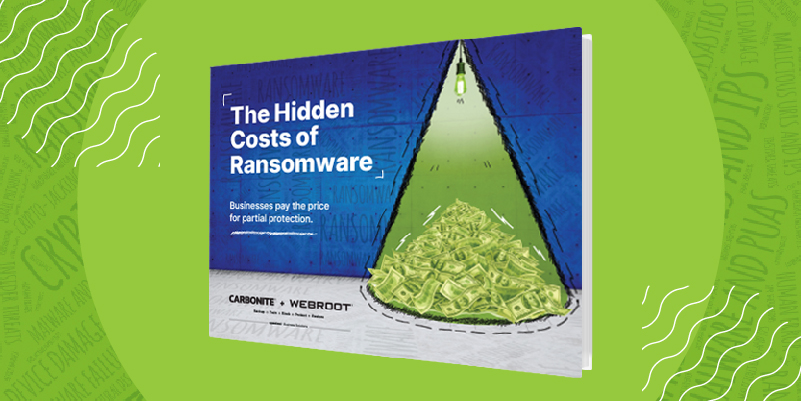“It is a nightmare. Do all you can to prevent ransomware.”
– A survey respondent
Many businesses are hesitant to talk about their experiences with ransomware. It can be uncomfortable to cop being hit. Whether it’s shame at not doing more to prevent it, the risk of additional bad publicity from discussing it or some other reason, companies tend to be tight-lipped about these types of breaches.
By offering anonymity in exchange for invaluable quantitative and qualitative data, Webroot and professional researchers surveyed hundreds of business leaders and IT professionals about their experiences with ransomware attacks.
Perhaps the most surprising finding from our survey, and certainly one that presents broader implications for those involved, is that the ransom demanded by attackers is only a small part of the loss that accompanies these crimes. There are also lost hours of productivity, reputational suffering, neutralized customer loyalty, data that remains unrecoverable with or without paying a ransom and the general sense of unfairness that comes with being the victim of a crime.
Our ransomware report seeks to quantify these knock-on effects of ransomware to the extent possible. We looked at the value of a brand and how likely customers are to remain loyal to one after their data is compromised in a breach. We studied the relationship between the time to detection of the incident and its cost. We added up the labor cost spent during remediation.
But we were also interested in real people’s stories concerning their run-ins with ransomware. What advice would they give to those who may find themselves in their same position? Respondents talked about the inevitability of attack, the relief when frequent backups mitigate the worst effects of ransomware, the importance of a plan, and advised against the payment of ransoms.
Finally, we provide advice for defending against or at least reducing the disruptive impact of ransomware attacks. As a security company, it won’t be surprising that we recommend things like endpoint and network security. But it goes deeper than that. We stress the importance of empowering users with the knowledge of what they’re up against and implementing multiple layers of defense.
Most importantly – no matter how comprehensive or scattershot a business’s protection is – is that that it’s are in place before it’s needed. During the fight is not the time to be building battlements. If your organization has avoided the scourge of ransomware so far, that’s excellent. But IT administrators and other decision-makers shouldn’t count on their luck holding out forever.
Here are a few of the report’s most enticing findings, but be sure the download the full eBook to access all of the insights it delivers.
KEY FINDINGS
- 50% of ransomware demands were more than $50k
- 40% of ransomware attacks consumed 8 or more man-hours of work
- 46% of businesses said their clients were also impacted by the attack
- 38% of businesses said the attack harmed their brand or reputation
- 45% were ransomware victims in both their business and personal lives
- 50% of victims were deceived by a malicious website email link or attachment
- 45% of victims were unaware of the infection for more than 24 hours
- 17% of victims were unable to recover their data, even after paying the ransom






